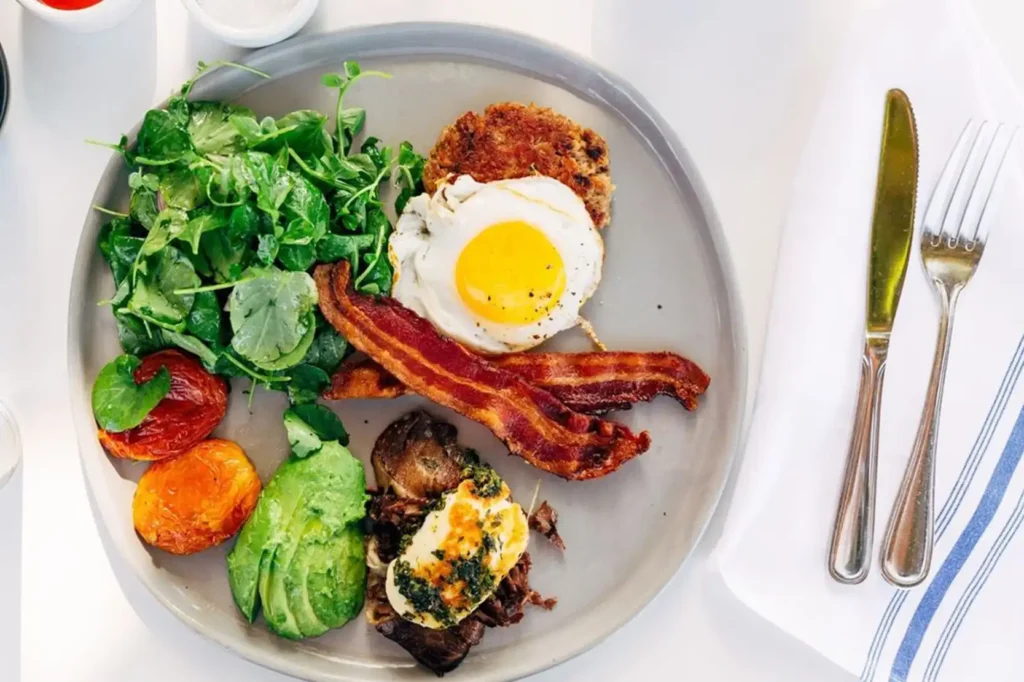Looking to start the keto diet? This beginner-friendly guide covers everything you need to know, from how it works to foods to eat, benefits, and common mistakes to avoid.
What is the Keto Diet:
The keto diet is a low-carb, high-fat diet that helps your body enter a metabolic state called ketosis, where it burns fat for energy instead of carbs. This way of eating has gained immense popularity for weight loss, mental clarity, and improved energy levels.
If you’re a beginner, understanding keto can feel overwhelming at first. What can you eat? What should you avoid? How do you know if you’re in ketosis? This guide will answer all your questions, help you avoid common mistakes, and set you up for success.
It takes 2-7 days to enter ketosis, depending on your carb intake and activity level.
How Does the Keto Diet Work:
The ketogenic diet works by drastically reducing your carbohydrate intake and replacing it with fat. When carbs are limited, your body shifts into ketosis, a state where it burns fat for fuel instead of glucose. This leads to significant weight loss and steady energy levels throughout the day.
When in ketosis, the liver produces ketones from fat, which serve as an alternative energy source for your brain and muscles. Unlike traditional diets that rely on counting calories, keto focuses on macronutrient ratios. This shift in energy metabolism is why keto is effective for weight loss, diabetes management, and even cognitive function.
- 70-80% fat
- 10-20% protein
- 5-10% carbohydrates

Benefits of the Keto Diet:
Many people turn to keto for rapid weight loss, but the benefits go far beyond shedding pounds. Here’s why keto is so effective:
1. Fast & Sustainable Weight Loss: Since your body burns fat for fuel, keto helps you lose weight faster than traditional diets. It also reduces hunger by stabilizing blood sugar levels and increasing satiety hormones.
2. Improves Mental Clarity & Focus: Ketones provide a cleaner and more stable energy source for the brain, reducing brain fog and improving focus. Many people report increased mental sharpness after just a few days on keto.
3. Boosts Energy Levels: Without the ups and downs of blood sugar spikes, you experience steady energy throughout the day. No more afternoon crashes or cravings for sugary snacks.
4. Supports Heart Health: Keto can increase HDL (good cholesterol) and decrease triglycerides, reducing the risk of heart disease. A well-balanced keto diet includes healthy fats like avocados, nuts, and olive oil.
5. Helps Manage Type 2 Diabetes: By lowering carbohydrate intake, keto helps regulate blood sugar levels and improve insulin sensitivity. Many diabetics see significant improvements, with some even reducing their need for medication.
What Foods to Eat on Keto:
Following a keto diet means focusing on whole, nutrient-dense foods. Here’s what you should include in your meals:
Healthy Fats (70-80% of Your Diet):
- Avocados
- Olive oil
- Coconut oil
- Butter & ghee
- Nuts & seeds
Proteins (10-20% of Your Diet):
- Eggs
- Beef, pork, lamb
- Chicken & turkey
- Fish & seafood
Low-Carb Vegetables (5-10% of Your Diet):
- Spinach
- Kale
- Broccoli
- Zucchini
- Cauliflower
Dairy (Full-Fat Only):
- Cheese
- Heavy cream
- Greek yogurt
Beverages
- Water
- Black coffee
- Herbal tea
Foods to Avoid on Keto:
To stay in ketosis, you must avoid high-carb foods. Here’s what to cut out.
Carbs & Sugary Foods:
- Bread, pasta, rice
- Sugary drinks & juices
- Cakes, cookies, candy
High-Carb Fruits:
- Bananas
- Grapes
- Apples
Processed & Unhealthy Fats:
- Margarine
- Vegetable oils (canola, soybean)
- Trans fats
- How to Know If You’re in Ketosis:
The best way to check if your body is in ketosis is by monitoring ketone levels. Here are signs you’re in ketosis.
- Increased energy & mental clarity
- Reduced appetite & fewer cravings
- Mild bad breath (due to acetone production)
- Frequent urination
- Higher ketone levels (measurable via urine strips or blood tests)
Common Keto Mistakes to Avoid:
1. Not Eating Enough Fat: Many beginners focus too much on cutting carbs but don’t eat enough fat. Without fat, you won’t get enough energy.
2. Eating Too Much Protein: Too much protein can be converted into glucose, kicking you out of ketosis. Stick to moderate protein intake.
3. Not Staying Hydrated: Keto causes water loss, so drink plenty of water and replenish electrolytes (sodium, potassium, magnesium).
4. Expecting Instant Results: Your body needs time to adapt. Give yourself at least 2-4 weeks to fully adjust.
Keto Meal Plan for Beginners:
Here’s a simple keto meal plan to get you started.
Breakfast: Scrambled eggs with avocado and bacon
Lunch: Grilled chicken salad with olive oil dressing
Dinner: Baked salmon with steamed broccoli and butter
Snacks:
- Cheese & almonds
- Hard-boiled eggs
FAQ
Most frequent questions and answers
Most fruits are high in sugar, but berries (strawberries, raspberries, blackberries) are keto-friendly in moderation.
It takes 2-7 days to enter ketosis, depending on your carb intake and activity level.
Yes, but stick to low-carb options like dry wine or spirits (vodka, whiskey) without sugary mixers.
Conclusion:
Starting the Keto Diet for Beginners may seem challenging at first, but with the right knowledge and meal plan, it becomes much easier. By focusing on high-fat, low-carb foods, you can enter ketosis and experience benefits like weight loss, increased energy, and mental clarity. Avoid common mistakes, stay hydrated, and be patient with your progress. Stick to the right foods, track your macros, and enjoy the transformation. Keto isn’t just a diet—it’s a lifestyle for long-term health!








